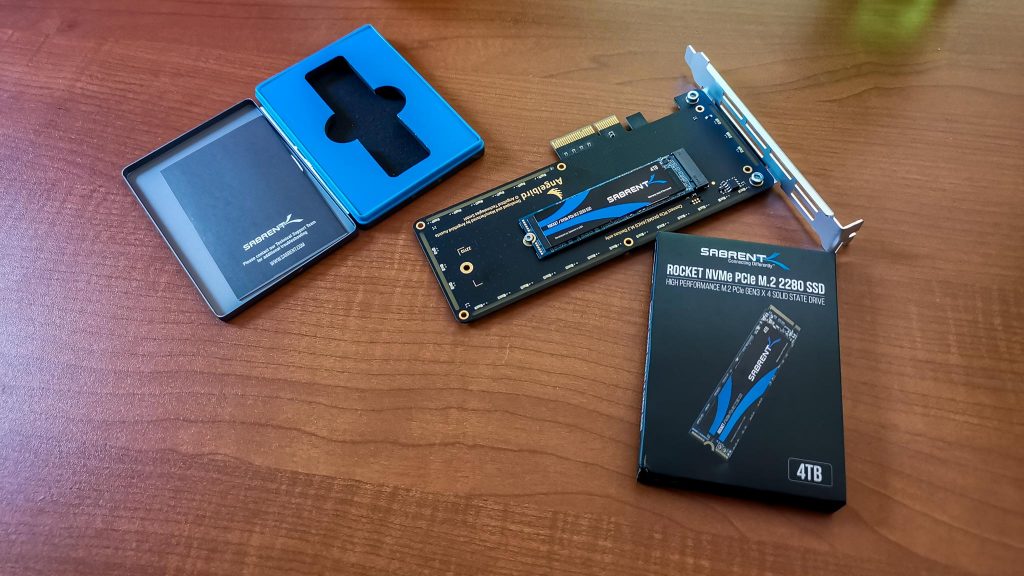It is a bit amusing actually. With every new level of NAND flash memory comes the forum thread wars. When NAND flash memory first became a thing back in 2008, it was SLC (single level cell) which was short lived by the next generation MLC, or multi-level cell NAND flash memory. Thread wars back then predicted that the world would collapse going from single to 2-bit memory. And then came TLC, or triple level cell, which was considered the new value memory. The concern was, of course, that with every jump the inevidability of lower durability grew. The SSD was more prone to failure. It may seem like a far jump but the all-time great Samsung 960/970 Pro SSDs are MLC memory. And we know what they cost.
TLC originally required some work. The memory alone couldn’t match the previous generation in performance and durability so companies had to incorporate software and hardware solutions to reach a level of performance and durability sufficient for consumer and enterprise sales. Make no mistake though, MLC SSDs are ten times what we have today and I might advise anyone who gets an opportunity to get their hands on one, to consider that purchase very seriously. Only last week someone asked my advice with respect to a OCZ RD400. I laughed actually as anything mlc has been priced through the roof as of late.
Today is a bit different. As reviewers, we have now ushered in many QLC (4-Bit) drives, and some do very well. The new norm, however, is boosting TLC memory now to the performance level. Where TLC was once value, now it will be seen as a higher quality SSD, intended for more demanding applications. And Sabrent has set this up very well as our most recent Sabrent review prior to this one was the Sabrent Rocket Q (Q for QLC) 8TB NVMe SSD. A bit backwards maybe, but today we are looking at its TLC brethren, the Sabrent Rocket (no Q) NVMe 4TB SSD.
The Sabrent Rocket is a PCIe 3.0 x4 (four lane) NVMe SSD that uses the M.2 2280 (80mm) form factor and is available in capacities if 256GB, 512GB, 1,2 and 4TB. It’s listed performance is variable with the 4TB version we are testing today reaching 3.45GB/s read and 3GB/s write throughput with 580K read and 650K write IOPS at low 4K write disk access. This Sabrent marketing photo will describe performance through lower capacities:
Very important to this drive is the fact that it is a TLC NVMe SSD and has black and blue branding which could easily be mistaken for other Sabrent SSDs as all are packaged very similarly. Sabrent’s packaging is very unique in that the SSD is contained within a very small aluminum clam shell style container and their color scheme and branding is very attractive.
Sabrent is also one of the first to include a copper plated branding that covers, and dissipates heat away from the controller and memory. Below that plate, we know that the Rocket contains the Phison E12S 8-channel controller, eight packages of Kioxia BiCS 96-layer 512GB TLC NAND flash memory (four on each side), along with two Nanya DDR4 pieces of DRAM cache.
The information sticker is on the back and removal of the branding on either side would, of course, void your warranty. Sabrent also includes free software such as Acronis True Image HD and their own SSD maintenance and monitoring utility called the Sabrent Rocket Control Panel.
Pricing. Checking Amazon right now, we can see prices of $49.99 (256GB), $79.98 (512GB), $149.98 (1TB), $279.99 (2TB) and $849.99 (4TB)
 The SSD Review The Worlds Dedicated SSD Education and Review Resource |
The SSD Review The Worlds Dedicated SSD Education and Review Resource | 


Prices are still ridiculous. For 532 dollars I get the: 4TB small ADATA XPG Spectrix S40G. For the rest of the money you would spend on the Sabrent, you can buy a lot of ice cream.
This is why I specifically address the fact that the buyer needs to understand his needs with respect to the task at hand. What do you need your SSD to do? Specific to whic SSD, we are late to the game in this review and it has already shown great sales and a great reputation from its purchasers.
Where are you finding that for $532? Newegg’s price is $799.
The Sabrent Rocket SDDs will only have the 5 year warranty if you actually register it through their website with proof of purchase receipt from a retailer or online retailer. Register it within the first month because the warranty offered starts on the day of purchase, so they warranty it during period it is being shipped to you from the retailer. I’ve just done the registration the other day so it’s still a fresh memory.
I just bought the 4 TB off of Newegf it should get here by Monday (August 3rd, 2020)
I already have the 2TB version of this SSD for my non Steam games. So I’m excited for it to arrive.
Not a fan of this brand, bought two 1tb M.2 drives and have had nothing but Drive C errors. Sending both back to manufacturer. Horrible, I work from home and the system gets laggy and crashes, after rebooting Event Viewer says repairing Drive C…